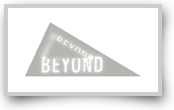The 4th Guangzhou Triennial: An Ongoing Exhibition for Three Years at Art China
At 10 o’clock on Aug. 16, 2011, the press conference for the 4th Guangzhou Triennial started at the Lakeview Hotel in Beijing. Zhu Di, Deputy Director-General of Department of Arts, Ministry of Culture, Luo Yiping, director of Guangdong Museum of Art, Jiang Jiehong and Jonathan Watkins, curators for the Theme Exhibition of the triennial, and Zhang Xudong, curator for the “Forums in Motion” program of the triennial attended the conference as guests. According to the conference, the 4th Guangzhou Triennial was scheduled to inaugurate in Guangzhou on Sept. 22.
This edition of the triennial will be different from all other biennials or triennials ever held. Guided by the idea of “Exhibition for the sake of exhibition itself”, the triennial will raise the question in an exhibition, and try to analyze and answer it in the following exhibitions. As an ongoing exhibition lasting for 3 years, the whole triennial, which is divided into three parts—Inauguration Exhibition, Project Exhibition, and Theme Exhibition—will begin with the Inauguration Exhibition and the Triennial Forum, to be followed by a study of cases and exploration that consist of 5 Project Exhibitions to be held inside and outside China, and will be ended by the Theme Exhibition and the Forum.
Taking the museum of art itself as a “meta-question” and centering the key words of “demolition” and “construction”, this edition of the Triennial will tie itself with the reconstruction and expansion project of Guangdong Museum of Art, and make enquiries into such “meta-questions” as the cultural logic of the transformation of art museums from traditional mode to modern mode. “Demolition” and “construction” is not merely confined to this triennial; in fact, the first step of modern art in China can be traced back to the process of deconstruction and construction. The 4th Guangzhou Triennial is closely linked to the demolition and construction of Guangdong Museum of Art, however it concerns not only the construction of the museum itself, but in a deeper sense, the development of art in China and even that of culture. When it comes to culture development, it will not do for the artists to go on their business behind the closed door of the art circle; what is desirable is to cooperate with other fields of the society to exercise more influence, and finally to elevate aesthetic needs of the people in a faster and more comprehensive way. From this point of view, it can be said as a highlight of this triennial that it is going to move beyond exhibition halls of the museum and connect itself with the history and development of the city, and to cooperate with the intellectual circle to hold five stations of forum to discuss the exhibition and the questions commonly interested to artists, intellectuals and the society, thereby to achieve closer interaction of all circles, and ultimately deeper thinking on the common questions facing human beings nowadays through exhibition practices and culture interpretation.
Apart from the three major exhibitions, the 3-year long “Forums in Motion” program is another highlight of the Triennial. The program, which will be a product of the cooperation among Guangdong Museum of Art, Center for Critical Theory of Literature and Art of New York University, and Center for Critical Theory of Literature and Art of Peking University, will be launched at the same time with Triennial; and its five stops will be held in Guangzhou, New York, Tokyo, Birmingham, and Beijing. The first topic of the first stop of the forum is one that we are familiar wit—“The End of Art”; and of the things to be expected of this stop is that Arthur C. Danto, a prominent proponent of such argument will address the forum. Does art end? What is art in a post-art era, and what is the value of art itself? What is the mission of art? And how should the so-called art today proceed? It is a topic of which we are delighted in endless discussion. It is safe to say that as time moves on, work of art ceases to be a mere issue of aesthetics; that it can not be judge with simple standards as beauty or ugliness; and that it has become more and more a vehicle of culture, history, and society. This triennial is an ongoing reflection on art per se through art practice. What changes will the 4th Guangzhou Triennial bring to Guangzhou, to modern art in China, and even to the development of the culture as whole? We shall see soon enough.



